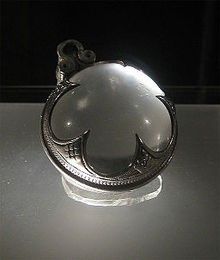Before modern technology, how was the strength of eyeglasses determined?
By trial and error
in all probability.
In its simplest form, a spectacle lens can be either concave (thinning towards the center) or convex (bulging in the center). The former correct myopia (nearsightedness) and the latter, farsightedness. In the modern optical industry, the unit of measurement in lenses is the "Diopter," a term invented by a French ophthalmologist Ferdinand Monoyer in 1872.
The first lenses for use in spectacles were all convex and used for magnification of text by scholars and monks. With age came the loss of their near vision from presbyopia but the skill of reading and writing was very valuable and not in wide supply. [Concave lenses for correcting myopia did not appear in any widespread way until the Renaissance. ] The first convex magnifying lenses were probably made of clear quartz in the shape of a hemisphere. Called "reading stones," the flat side was slid along the document so that the curved surface magnified the text below. About 1300 C.E. a pair of these would be mounted in a surrounding frame with a hinge connecting them to be held on the nose:

The amount of
magnification was dependent on the curve and the degree of polishing of the
surface on these reading stones. The strength of magnification was of secondary
importance to clarity and evenness of the surface, so probably a matter of
experience by the craftsman. Here is one of the very oldest ever discovered,
the Visby Stone from Viking times, probably made in Byzantium around 1000 C.E.:

_Written by J. Trevor Woodhams, M.D. - Chief
of Surgery, Woodhams Eye Clinic


